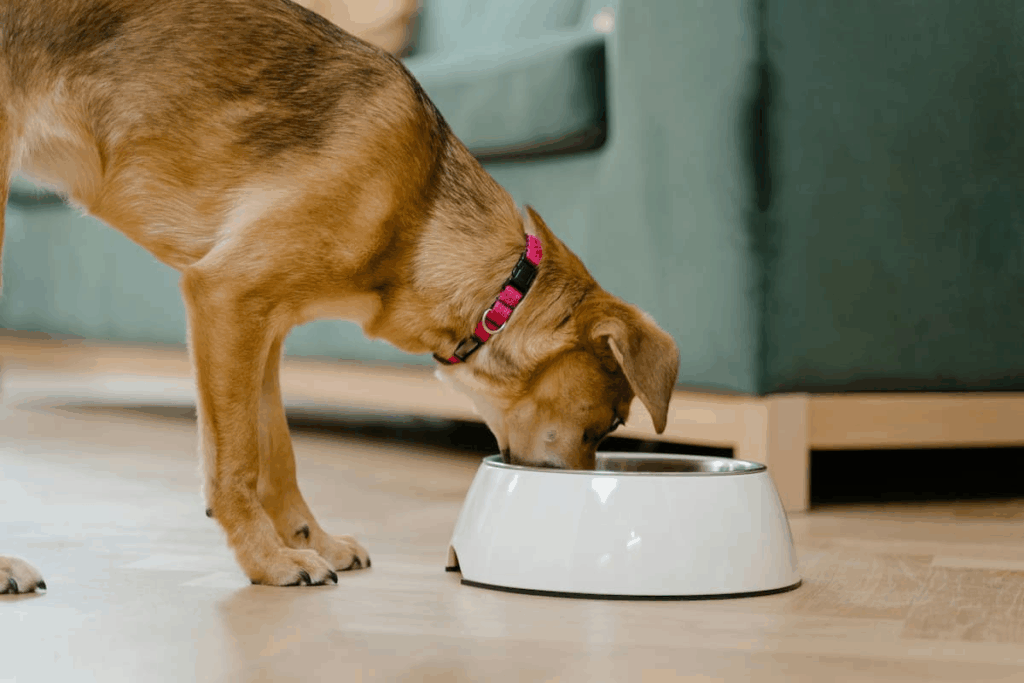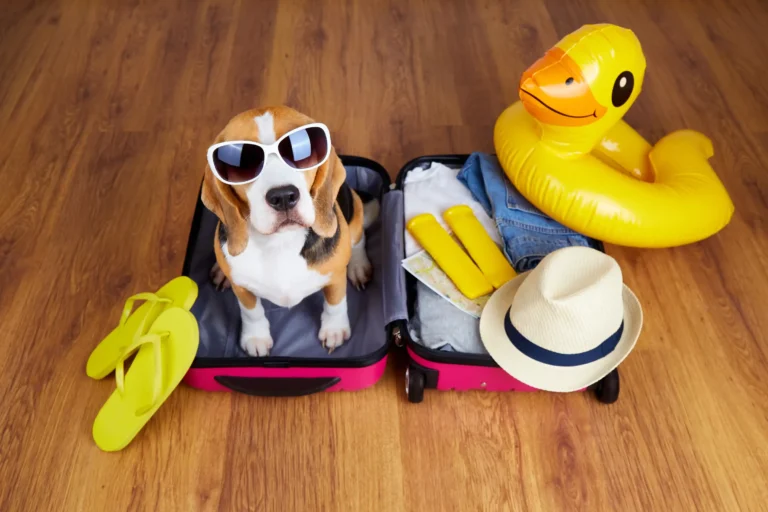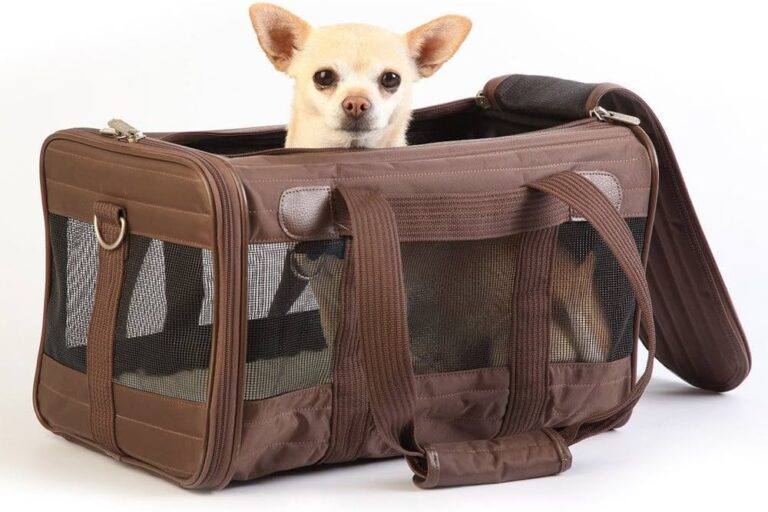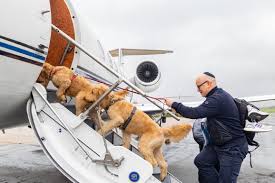Embarking on outdoor adventures with your petite pooch can be an exhilarating experience. As we all know, small dogs are full of energy and enthusiasm, but their size may pose unique challenges and risks during outdoor activities. Whether you’re hiking in the mountains, camping in the woods, or simply enjoying a day at the park, ensuring the safety of your small-sized canine companion should always be your top priority.
This post aims to provide essential safety tips for small dog owners, ensuring that each outdoor excursion you undertake with your furry friend is not only enjoyable but also safe and secure. From selecting suitable gear and preparing for potential dangers to knowing the right feeding and hydration practices, we will dive into all the crucial factors that small dog owners need to consider.
We’ll also highlight the importance of training your small dogs for outdoor adventures, discussing how to instill obedience and good behavior in various outdoor situations. Additionally, understanding your pet’s physical limitations and health considerations will also be emphasized, to guarantee a fun and injury-free outing.
So, gear up for a comprehensive guide filled with expert advice and practical tips that will equip you to face any outdoor situation confidently with your small dog. Let’s ensure that your tiny explorer is ready for every adventure, safely and securely. 🐕🦺🌳🏞️
Understanding the Unique Needs of Small Dogs
Small dogs are undeniably adorable, but their size often makes them more vulnerable in outdoor settings. With a physique that is not as robust as their larger counterparts, small dogs can face unique challenges and hazards. As an owner, it’s critical to understand these unique needs and risks to ensure a safe and enjoyable outdoor experience.

Physical Limitations: Small dogs have less body mass, making them more susceptible to harsh weather conditions. Exposure to cold, in particular, can be dangerous as they can lose body heat rapidly. In addition, their short legs may not allow them to navigate rough terrains effectively, posing the risk of injury.
Susceptibility to Predators: Their small size also makes them a potential target for larger animals, including some birds of prey. Always keep a close eye on your dog and consider using a leash in open spaces.
Monitoring Your Dog’s Health During Adventures
Keeping a close eye on your small dog’s health while outdoors is essential for preventing serious issues. Small dogs are less resilient to environmental changes and physical stress, so vigilance is key to identifying early signs of trouble.
Watch for symptoms such as excessive drooling, heavy panting, limping, or signs of distress. If your dog starts limping or showing hesitation when walking, check their paws for cuts, thorns, or other injuries. Minor issues can be treated immediately with your first aid kit, while more severe symptoms should prompt an end to the activity and a visit to the vet if necessary.
Always carry a basic health checklist that includes your dog’s vaccination status, known allergies, emergency vet contacts, and any regular medications they might need. Having this information readily available can save valuable time during an emergency.
Paw Protection and Care
The paws of small dogs are extremely sensitive and susceptible to injuries, especially on rough or hot surfaces. Sharp rocks, thorns, and even hot asphalt can cause painful burns or cuts. Protective boots are one of the best investments for outdoor adventures.
If your dog is not accustomed to wearing boots, introduce them gradually at home before your trip. Let your dog walk around the house wearing them so they get comfortable. Check the fit to ensure they are snug but not too tight, allowing free movement without slipping off.
After every outdoor adventure, inspect your dog’s paws carefully. Look for any signs of cracking, redness, swelling, or stuck debris. Washing the paws with warm water and applying a dog-safe paw balm can help prevent dryness and cracking.
Temperature Awareness and Weather Precautions
Understanding and preparing for weather conditions is crucial when planning outdoor activities with small dogs. Their limited body fat makes them more vulnerable to temperature extremes compared to larger breeds.
In cold weather, bundle up your dog with an insulated coat and limit time spent outside during extremely low temperatures. Watch for signs of hypothermia, such as shivering, lethargy, or whining. Provide frequent breaks indoors or in a warm shelter.
In hot weather, avoid peak sun hours, typically between 10 a.m. and 4 p.m., and choose shaded paths whenever possible. Bring a collapsible water bowl and encourage frequent drinking to prevent dehydration. Symptoms of heatstroke include excessive panting, drooling, confusion, and vomiting. If you suspect overheating, move your dog to a cooler area immediately and offer small sips of water.
Navigation and Safety on Trails
Not all trails are safe for small dogs. When selecting a hiking path or outdoor location, consider the terrain’s difficulty, distance, and potential hazards. Look for pet-friendly trails that offer softer surfaces and minimal elevation changes.
Keep your dog leashed at all times unless you are in a designated off-leash area that is securely fenced. Even the most obedient dogs can be tempted by wildlife, interesting scents, or sudden noises. A standard leash of about six feet offers good control without limiting your dog’s movement too much.
Always stay on marked trails to avoid getting lost and encountering unexpected dangers like unstable ground or toxic plants. Bring a map of the area and consider using a GPS tracker attached to your dog’s harness as an extra safety measure.
Food and Snack Management During Adventures
Proper nutrition plays a big role in maintaining your dog’s energy levels during long outings. Small dogs benefit from high-energy snacks that can be given during breaks.
Pack lightweight, non-perishable treats rich in protein and healthy fats. Avoid overly processed snacks or foods with too much sugar and salt. Good options include dehydrated meat strips, dog-friendly energy bars, or small pieces of boiled chicken stored in a cooler pack.
Feeding small amounts frequently is better than giving one large meal during outdoor activities. This helps maintain stable blood sugar levels without overloading the stomach, which can cause discomfort or nausea during physical exertion.
Communication and Training Reinforcement Outdoors
Outdoor environments are full of distractions that can challenge your small dog’s focus and obedience. Continuous training and reinforcement of commands are essential during adventures.
Practice basic commands like sit, stay, and come in various outdoor settings before embarking on more demanding adventures. Positive reinforcement techniques, such as treats and praise, work best.
If you encounter another dog, a cyclist, or a hiker, recall your dog immediately to your side. If your dog struggles with distractions, practice training sessions near parks or trails with increasing levels of difficulty. The goal is to ensure they respond to your commands reliably, even when excited or distracted.
Dealing with Wildlife Encounters
Wild animals, from squirrels to larger predators, can pose threats to small dogs. Teach your dog to ignore wildlife using the “leave it” and “come” commands reinforced with high-value rewards.
Avoid letting your dog wander into bushes or off-trail areas where snakes, spiders, or other hidden dangers might be lurking. Always scan ahead on the trail for animals and stay alert to your surroundings.
If you are traveling in an area known for larger predators, such as coyotes or hawks, keep your dog very close to you and consider using a reflective vest or brightly colored gear to make your dog more visible.
Setting Up a Safe Rest Area
Whenever you take a break during your adventure, establish a safe and comfortable rest area for your small dog. Look for a shaded spot away from busy paths and hazards.
Lay down a soft blanket or mat to protect your dog from the ground. Offer fresh water and allow your dog to relax and recover. Keep treats handy to reward calm behavior during rest periods.
Always supervise your dog closely during breaks. Even a quick nap can be interrupted by curious animals or unexpected changes in the environment.
Creating an Emergency Plan
Preparation is vital when venturing into the outdoors with a small dog. Before setting out, create an emergency plan tailored to your specific location.
Identify the nearest veterinary clinic along your route or near your destination. Save the clinic’s phone number in your mobile device and write it down as a backup.
Carry a basic first aid manual specifically for pets. Knowing how to handle minor injuries, allergic reactions, or even CPR for dogs can make a critical difference.
Also, consider packing a pet emergency whistle or loud noise maker. This can help you scare away wildlife or attract attention if you become separated from your dog.
Adjusting Your Adventure Style to Your Dog’s Personality
Every small dog has a unique personality and tolerance for different activities. Some may love hiking steep trails while others prefer leisurely strolls in the park.
Observe your dog’s behavior during and after outings. Enthusiastic wagging, bright eyes, and eagerness to continue indicate your dog is enjoying the adventure. Signs of stress, such as cowering, tail tucking, or whining, suggest that the activity may be too intense.
Choose adventures that match your dog’s energy levels and comfort zones. Building positive experiences will increase your dog’s confidence and make future outings even more enjoyable.
Importance of Post-Adventure Care
After a day spent exploring the great outdoors, your small dog needs proper post-adventure care. Begin by checking for ticks, burrs, or any cuts and bruises.
Give your dog a warm bath if they were exposed to muddy or dusty environments. Use gentle, dog-safe shampoo to avoid skin irritation.
Allow your dog to rest in a familiar, cozy space. Outdoor activities can be physically and mentally stimulating, so providing a calm environment for recovery is important.
Monitor your dog for the next twenty-four to forty-eight hours for any signs of injury, illness, or abnormal behavior. Contact your veterinarian if you notice anything concerning.
Understanding and Addressing Dietary Needs
The dietary needs of small dogs can differ greatly from larger breeds. They have a faster metabolism and thus require more calories per pound of body weight. Consider packing high-quality, protein-rich snacks for your outdoor adventures to keep your dog energized.

Proper hydration is also crucial, particularly during hot weather or strenuous activities. Always carry enough water for both you and your furry friend, and ensure they have access to fresh water at all times.
First Aid: Be Prepared for Emergencies
Despite taking all necessary precautions, accidents can still happen. A basic knowledge of doggy first aid and a well-stocked first aid kit can be a lifesaver.
Your kit should include essential items such as bandages, tweezers for tick removal, a digital thermometer, and a list of emergency contact numbers including your vet’s.
Respect for Wildlife and the Environment
Teaching your small dog to respect wildlife and the environment not only protects them but also preserves nature. Discourage behaviors like chasing wildlife, disturbing nests, and digging up plants.
Moreover, always clean up after your dog to minimize environmental impact.
Final Thoughts
Small dogs can enjoy outdoor adventures just as much as larger breeds. With the right knowledge, gear, training, and respect for nature, you can ensure these experiences are not only fun, but also safe and secure for your furry friend. Remember, every dog is unique. So, always consider your dog’s individual needs and preferences when planning your adventures.
Happy exploring!
Conclusion
In conclusion, preparing for outdoor adventures with your small dog requires careful planning and consideration. Ensuring your pet’s safety is a top priority. Start by equipping them with essential gear such as a sturdy harness, leash, and a comfortable backpack, all of which provide security and control during your outdoor escapades. Regular health checks and vaccinations are equally important, offering protection against potential health hazards in the great outdoors.
Always keep an eye out for any signs of distress or discomfort in your pet, and never push them beyond their physical limits. Remember, safety comes first in any adventure. Additionally, adequate training is key. Teach your furry friend essential commands and how to behave in various situations they may encounter outside.
Lastly, always respect the environment you’re exploring. Leaving no trace behind not only preserves the beauty of nature but also ensures a safer environment for other adventurers and their pets. With these safety tips in mind, small dog owners can look forward to creating memorable and secure outdoor experiences with their four-legged companions. Enjoy the adventure, but remember, safety first!
Remember to use the keyword “Adventure Ready: Essential Safety Tips for Small Dog Owners” in your SEO efforts to attract the right audience to your content. This guide is not just about adventure, it’s about responsible and safe pet ownership.



